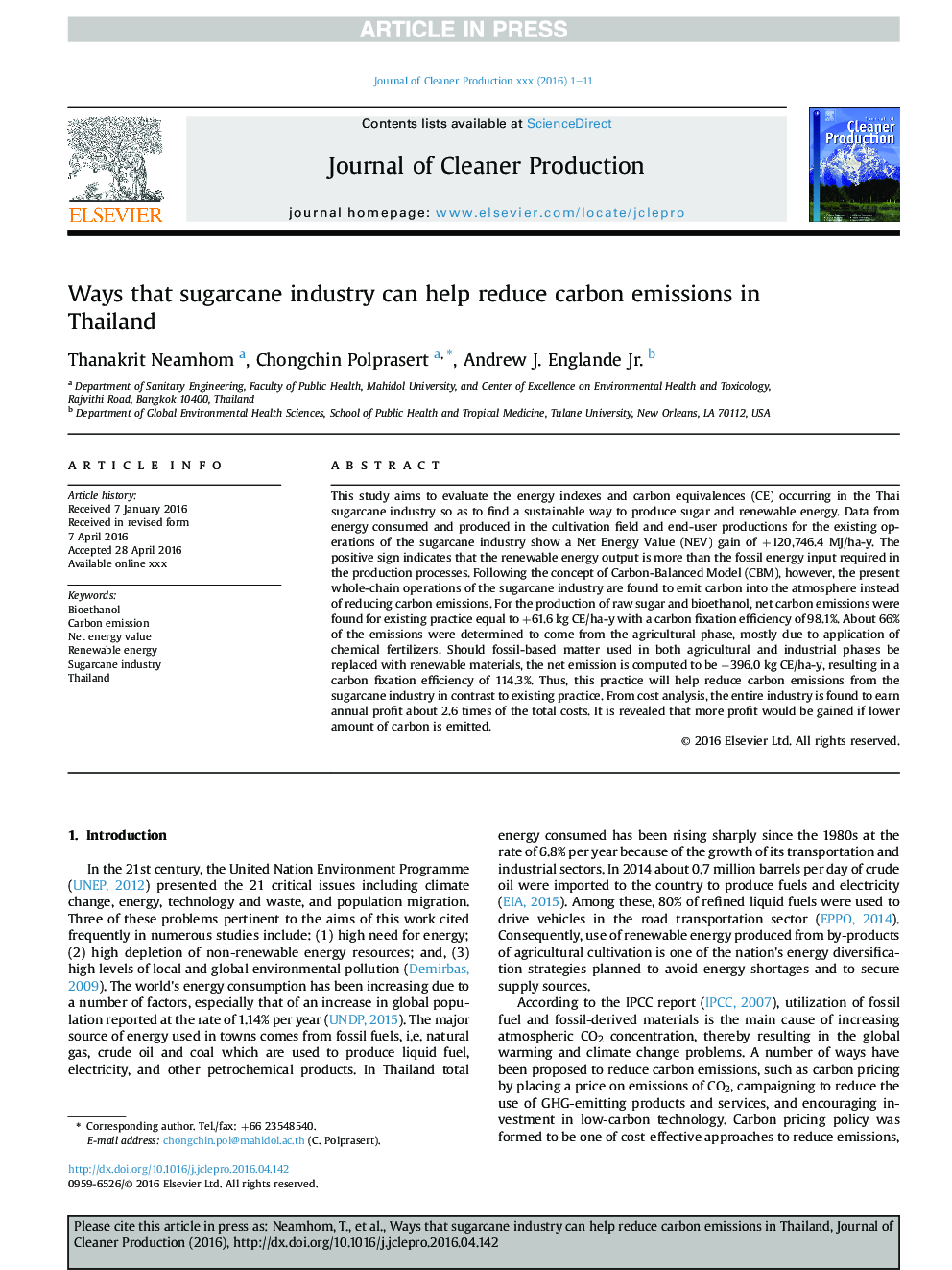| Article ID | Journal | Published Year | Pages | File Type |
|---|---|---|---|---|
| 8101682 | Journal of Cleaner Production | 2016 | 11 Pages |
Abstract
This study aims to evaluate the energy indexes and carbon equivalences (CE) occurring in the Thai sugarcane industry so as to find a sustainable way to produce sugar and renewable energy. Data from energy consumed and produced in the cultivation field and end-user productions for the existing operations of the sugarcane industry show a Net Energy Value (NEV) gain of +120,746.4 MJ/ha-y. The positive sign indicates that the renewable energy output is more than the fossil energy input required in the production processes. Following the concept of Carbon-Balanced Model (CBM), however, the present whole-chain operations of the sugarcane industry are found to emit carbon into the atmosphere instead of reducing carbon emissions. For the production of raw sugar and bioethanol, net carbon emissions were found for existing practice equal to +61.6 kg CE/ha-y with a carbon fixation efficiency of 98.1%. About 66% of the emissions were determined to come from the agricultural phase, mostly due to application of chemical fertilizers. Should fossil-based matter used in both agricultural and industrial phases be replaced with renewable materials, the net emission is computed to be â396.0 kg CE/ha-y, resulting in a carbon fixation efficiency of 114.3%. Thus, this practice will help reduce carbon emissions from the sugarcane industry in contrast to existing practice. From cost analysis, the entire industry is found to earn annual profit about 2.6 times of the total costs. It is revealed that more profit would be gained if lower amount of carbon is emitted.
Related Topics
Physical Sciences and Engineering
Energy
Renewable Energy, Sustainability and the Environment
Authors
Thanakrit Neamhom, Chongchin Polprasert, Andrew J. Jr.,
